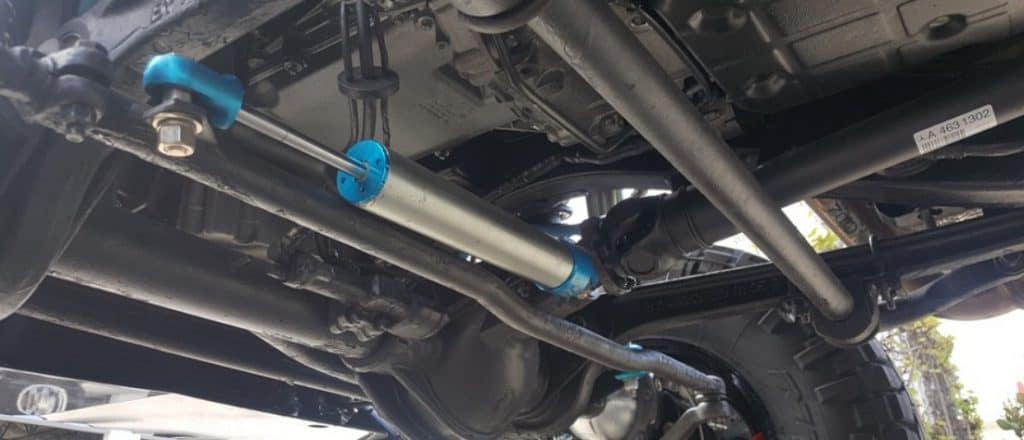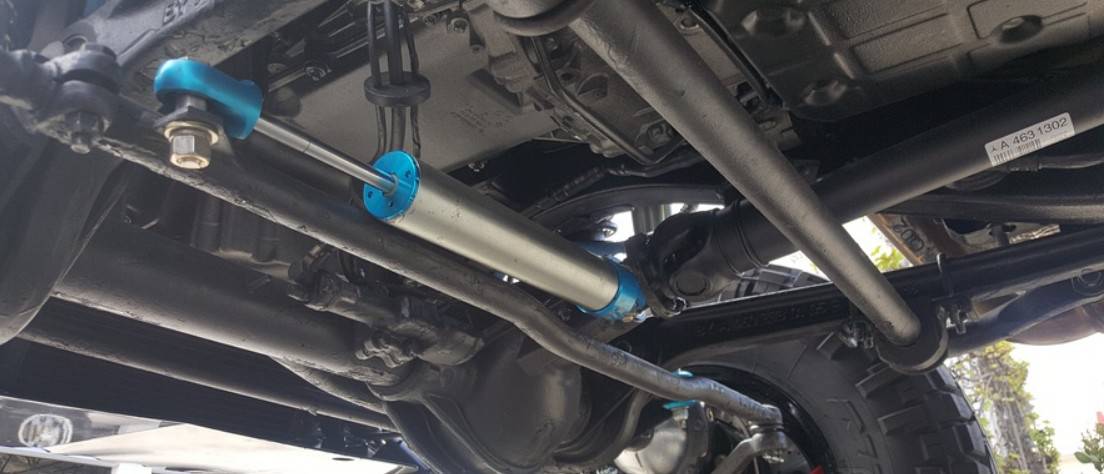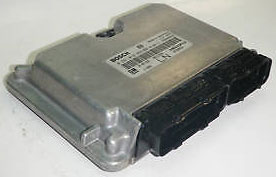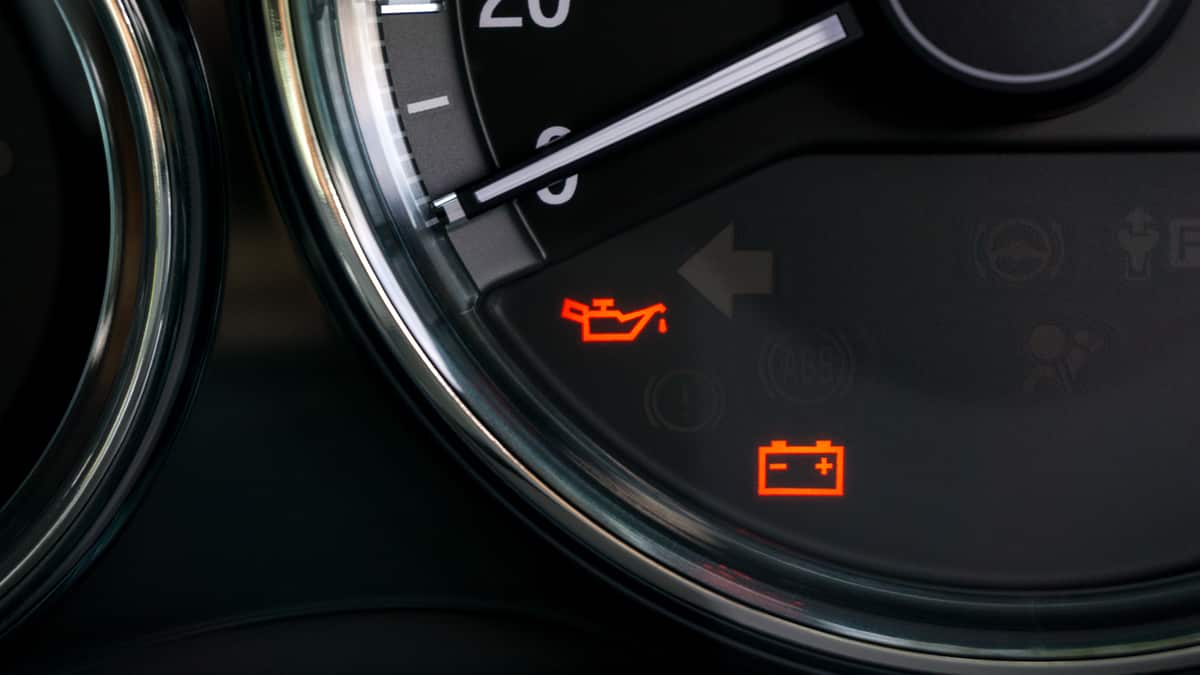In this article, we will explore the symptoms of a failing steering damper to help vehicle owners recognize the signs and take timely action to address the problem.
The steering damper, an essential component of a vehicle’s steering system. Plays a crucial role in maintaining stability and control while driving. It acts as a shock absorber, dampening the oscillations and vibrations that occur during steering. Resulting in a smoother and safer driving experience. However, like any automotive part, the steering damper can experience wear and tear over time, leading to potential issues that can compromise driving safety.

Unusual Vibrations and Shaking
One of the primary indicators of a failing steering damper is an increase in vibrations and shaking while driving. The damper is designed to absorb these oscillations, but as it wears out, it becomes less effective. You might notice these vibrations particularly when driving over uneven or bumpy surfaces or when making sharp turns. If your steering wheel seems to shake excessively, it’s time to inspect the steering damper.
Difficulty Steering or Poor Handling
A failing steering damper can also lead to difficulties in steering, especially when navigating through rough terrain or dealing with strong crosswinds. As the damper loses its ability to absorb shocks, you may find it harder to maintain control over your vehicle, making steering feel less responsive and more challenging. If you notice any deterioration in your vehicle’s handling, it’s essential to investigate the steering damper as a potential culprit.
Uneven Tire Wear
A malfunctioning steering damper can cause uneven tire wear. When the damper fails to dampen the shocks effectively, the tires are exposed to excessive forces, leading to uneven tread wear. Inspect your tyres regularly for any irregular patterns, such as excessive wear on one side or in the centre, as it may be an indication of a faulty steering damper.
Excessive Bouncing after Bumps
A properly functioning steering damper should provide a smooth ride, absorbing the impacts of road imperfections. If you notice that your vehicle bounces excessively after hitting a bump or pothole, it could be a sign that the steering damper is not doing its job correctly. This issue may not only lead to discomfort but also jeopardize vehicle stability and control.
Noisy Steering
Unusual noises coming from the steering system, such as knocking or clunking sounds, could indicate a failing steering damper. When the damper’s internal components wear out or become damaged, they may produce these noises as the steering wheel is turned. Ignoring such sounds can result in more severe steering issues, so prompt investigation is crucial.
FAQs
What is a steering damper, and what does it do?
A steering damper, also known as a steering stabilizer, is a vital component in a vehicle’s steering system. It is designed to absorb and dampen the vibrations, oscillations, and jolts that occur during steering. By doing so, enhances stability, reduces steering wheel vibration, and improves overall control, especially when driving on uneven or bumpy roads.
What are the common symptoms of a failing steering damper?
The symptoms of a failing steering damper include:
- Unusual vibrations and shaking in the steering wheel.
- Difficulty steering or poor handling, especially on rough terrain.
- Uneven tire wear patterns, indicating excessive forces on the tires.
- Excessive bouncing of the vehicle after hitting bumps or potholes.
- Noisy steering, such as knocking or clunking sounds when turning the wheel.
Can I continue driving with a failing steering damper?
It is not recommended to drive with a failing steering damper. A compromised damper can lead to unsafe driving conditions, reduced control, and potential steering system failures. It’s crucial to have the steering damper inspected and replaced by a qualified mechanic as soon as possible.
What causes a steering damper to fail?
Steering dampers can fail due to normal wear and tear over time. Exposure to harsh road conditions, high mileage, and poor maintenance can all contribute to its deterioration. Additionally, damage from impacts or accidents can also lead to a failing steering damper.
Can I replace the steering damper myself?
While some experienced DIY enthusiasts may attempt to replace a steering damper, it is generally recommended to have a professional mechanic handle the replacement. Proper installation and calibration are crucial for ensuring the steering damper functions correctly and does not compromise vehicle safety.
How much does it cost to replace a steering damper?
The cost of replacing a steering damper can vary depending on the make and model of the vehicle and the brand of the damper. On average, the replacement cost can range from $100 to $300, including parts and labour.
Read more: Wrong Fuel In Your Car: What To Do
Is a steering damper the same as a power steering pump?
No, a steering damper is different from a power steering pump. The steering damper helps dampen vibrations and shocks during steering, while the power steering pump assists in reducing the effort required to turn the steering wheel.
How often should I inspect or replace my steering damper?
The frequency of inspection and replacement can vary based on driving conditions and vehicle usage. As a general guideline, it’s a good idea to have the steering damper inspected during regular maintenance intervals (typically every 12,000 to 15,000 miles) and replaced if any symptoms of failure are observed.
Can a failing steering damper lead to other steering system issues?
Yes, a failing steering damper can put additional stress on other steering components, leading to accelerated wear and potential failures. Ignoring a failing steering damper could lead to more expensive and complex steering system repairs in the future.
Is a failing steering damper covered under warranty?
Warranty coverage can vary depending on the vehicle’s manufacturer and the terms of the warranty. It’s essential to check your vehicle’s warranty documentation or consult with the manufacturer to determine if the steering damper replacement is covered.
Read more: Unlocking the Power of Vehicle Performance: The Benefits of ECU Repair
Conclusion
The steering damper is an integral part of a vehicle’s steering system, contributing to a safe and comfortable driving experience. Recognizing the symptoms of a failing steering damper can prevent potential hazards on the road and extend the life of your vehicle’s steering components. If you notice any of the mentioned signs, it’s essential to have your vehicle inspected by a qualified mechanic promptly. Timely maintenance and replacement of a failing steering damper will not only improve driving comfort but also ensure your safety and the safety of others on the road.


